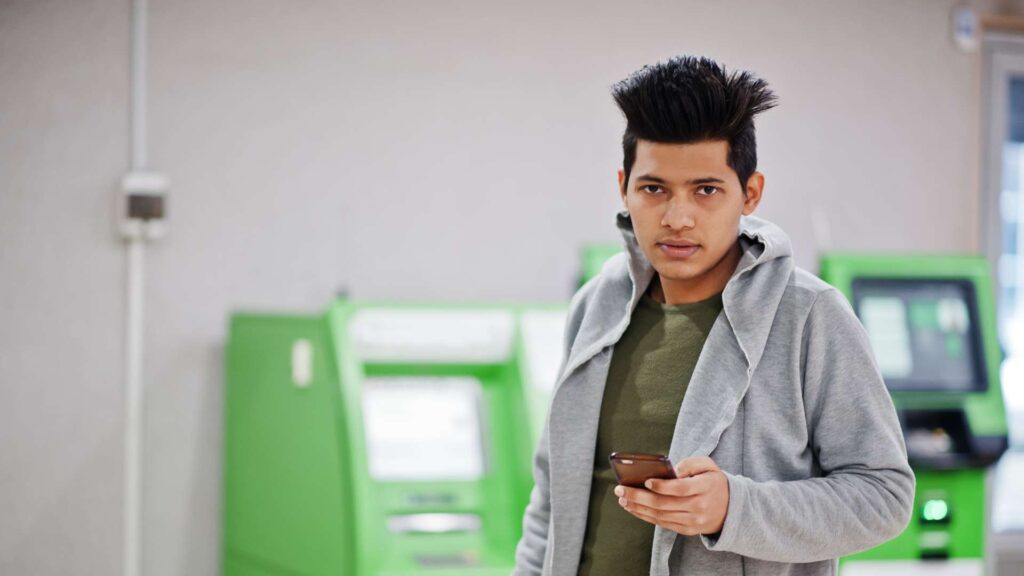Table of Contents
Walk through any gift shop or scroll through online marketplaces, and you’ll see a familiar pattern: perfectly curated boxes with simple items marked up three to five times their actual value. A candle, some tea, and a ribbon suddenly become a $45 “relaxation set.” A few cookie ingredients in a jar become a $30 “artisan baking kit.”
The truth? You can make the same thing, often better, for a fraction of the price. Welcome to the world of DIY gift kits: thoughtful, affordable, and surprisingly profitable when you plan smart.
And when you pair that creativity with Beem’s BFF Budget Planner, you can actually track your savings, budget for materials, and even earn cashback while shopping for supplies. Let’s get into it.
Why DIY Gift Kits Work So Well
DIY kits strike the perfect balance between personalization and practicality. You’re not just giving “a thing,” you’re giving an experience, something useful, beautiful, and made with intention.
But the real secret lies in how the economics play out:
- You control the cost. By sourcing materials yourself, jars, ribbons, candles, and ingredients, you skip the intermediaries and brand markups that inflate store prices.
- You personalize easily. Add a name tag, handwritten recipe, or favorite scent, things big brands can’t replicate.
- You save through scale. Buying one jar is expensive. Buying twelve? Suddenly, you’re saving 50% or more.
When you look at it this way, DIY gift kits are not just craft projects; they’re micro-economies of creativity and savings.
The Sweet Spot: Affordable, Not Cheap
There’s a difference between inexpensive and cheap-looking. Your goal is to make the gift feel premium, even if it costs under $10 to create. Here’s how to do that:
- Stick to one visual theme per kit — earthy, minimal, colorful, or vintage.
- Use one high-quality centerpiece item (a candle, plant, mug, or soap) surrounded by smaller, inexpensive fillers.
- Keep the packaging clean and consistent: neutral kraft paper, twine, and printed labels go a long way.
- Add a handwritten note: the single easiest way to make something feel personal.
You’re not trying to fool anyone; you’re showing that value doesn’t have to come from price tags.
Read related blog: How Much to Spend on Bridesmaid Gifts? Budgeting Tips
Crowd Favorites: Kits That Always Impress
Below are some timeless ideas you can adapt for any season or personality, along with practical notes on cost, assembly, and presentation.
1. The Cozy Night-In Kit
Perfect for winter gifts, thank-yous, or self-care baskets.
What to include:
- One small candle in a mason jar
- A sachet of loose-leaf tea or cocoa
- Cozy socks or slippers
- A small handwritten “unwind” card
Why it works: It’s simple, low-cost, and everyone loves a little warmth. Materials bought in bulk cost under $8 per kit, compared to retail versions that cost $ 25 or more.
2. The Baker’s Essentials Kit
For the weekend baker or anyone who loves the smell of cookies.
What to include:
- Pre-measured dry ingredients for cookies or brownies
- Mini spatula or cookie cutter
- Printed recipe card
- Small mason jar with ribbon
Pro tip: Mix and match dry ingredients in layers for a “stacked jar” look. It’s a visual appeal at zero extra cost.
3. The Green Thumb Starter
A tiny, compact kit that looks appealing but costs under $10 to make.
Produce to include:
- Small succulent or seed packet
- Mini pot or glass jar
- Gravel and soil in labeled sachets
- Care instruction card
Add a recycled wooden spoon as a “soil scoop” for a bonus charm.
4. The Craft-for-Kids Pack
For parents who want to gift something fun and screen-free.
What to include:
- Art supplies (pom-poms, glue sticks, paper, crayons)
- Printed craft instructions
- A small “I Made This” badge or sticker
It’s low-effort but high impact. Costs just $3–$5 each when made in batches.
5. The Coffee (or Tea) Sampler Box
Ideal for co-workers, teachers, or friends who love caffeine.
What to include:
- Two sachets of premium coffee or tea
- A small jar of honey or sugar cubes
- Wooden stir sticks
- Mini mug or reusable cup sleeve
Add a custom tag that says, “You’re Brew-tiful.” Cheesy? Yes. Effective? Absolutely.
Read related blog: How Much to Spend on Groomsmen Gifts? Practical Tips
Sourcing Smart: Where the Real Savings Happen
Making kits that beat store prices starts with buying smarter.
Here’s your sourcing checklist:
- Buy in bulk. Jars, labels, and ribbons are cheap when purchased in packs. Amazon, local wholesalers, or dollar stores are gold mines.
- Thrift creatively. Mugs, glass jars, and trays are often cost-effective finds at thrift shops. Clean them up and they look brand new.
- Use seasonal clearance. Stock up on generic ribbons, wrapping paper, and small items right after the holidays.
- Leverage Beem cashback. When you buy supplies, Beem’s cashback offers can offset part of your costs. It’s like getting paid to create.
- Track every expense. Use Beem’s BFF Budget Planner to stay within budget and see your real savings at one glance.
Packaging That Looks Luxe (But Isn’t)
Good packaging is about texture and tone, not expense.
- Use kraft paper boxes or brown paper bags tied with twine or raffia. They look rustic and natural.
- Print your own labels. A simple black font on white stickers looks modern and clean.
- Add one small decorative touch. Dried lavender, a cinnamon stick, or a pressed leaf instantly elevates presentation.
- Include an instruction or story card. A short, brief made this” paragraph “transform into a conversation piece.
Math: How DIY Kits Beat Retail Prices
Let’s take an example.
| Item | Retail Kit Price | DIY Cost | Savings |
| Spa Kit (candle, soap, bath salt) | $45 | $12.50 | $32.50 |
| Baking Kit (jar mix, utensils) | $30 | $8.00 | $22.00 |
| Coffee Gift Box | $28 | $9.50 | $18.50 |
| Succulent Starter | $25 | $7.00 | $18.00 |
Now imagine making 10 of each during the holidays. You’ve saved over $900 just by assembling them yourself. That’s not crafting; that’s strategy.
Turning DIY into a Side Hustle
Once you’ve mastered your kits, it’s easy to turn them into an income stream.
- Sell at local markets or online through Etsy or Instagram.
- Offer personalized packaging for small fees.
- Keep inventory minimal. Make kits to order to avoid waste.
- Use Beem to log profits and expenses separately so your hobby stays financially healthy.
Over time, you’ll know exactly which kits sell best, which materials give the highest ROI, and when to restock supplies.
Sustainability Sells (and Saves)
Another reason DIY kits outshine store-bought ones is that they are more environmentally friendly. By reusing jars, buying in bulk, and reducing packaging waste, you can cut and minimize your environmental footprint.
You can even lean into this story. Inform them that each kit was crafted from LED or sustainable materials. People love gifts that feel good to give and receive.
The Psychology of Handmade Generosity
A store-bought gift feels transactional: you spend money, wrap it, and hope it lands well. A handmade kit, though, carries something intangible: your time. And in an era when everyone’s rushing, time is the new luxury.
When someone unwraps a DIY kit, they’re not just seeing a collection of items; they’re reading care between the layers. They see that you planned, though considered taste, and invested effort instead of cash.
From a psychological perspective, recipients attach greater emotional value to handmade gifts because they signal thoughtfulness, not price. That emotional equity makes your $10 DIY kit feel worth $100, both to you and them.
Group Gifting: Split Costs, Multiply Impact
You don’t always have to make or give alone. Some of the best DIY kits come from group gifting, where friends, colleagues, or family pool resources to create something bigger, better, and still budget-friendly.
For example:
- A “Welcome Home” kit assembled by neighbors: one person brings a plant, another bakes cookies, someone else adds candles.
- A “Team Appreciation Box” for coworkers, with everyone contributing one handmade item.
- A “Family Holiday Kit” assembled across generations: kids make cards, adults curate the treats.
The group gifting approach stretches both money and meaning. You save per person, create something fuller, and build community in the process.
The Hidden Profit of Homemade Gifting
Here’s something most people overlook. Every DIY gift you make is a soft investment in financial discipline.
Think about it:
- You plan instead of panic-buying (which saves 20–40% instantly).
- You reuse, repurpose, and get creative instead of relying on retail markups.
- You learn pricing and sourcing. The same skills small business owners use.
That’s not just frugality; that’s financial creativity. Each time you create instead of consume, you sharpen your budgeting instincts. Over time, you start seeing not just the dollar you saved, but the mindset you built.
The Holiday Rush Strategy: Beat Deadlines, Beat Markups
DIY gifts save money year-round, but they shine brightest when retail prices surge, such as during the holiday season. That’s when small planning shifts can double your savings.
Here’s how to get ahead:
- Start in October: Buy raw materials before holiday inflation hits.
- Batch-create: Assemble multiple kits simultaneously to save time and reduce packaging costs.
- Pre-sort supplies: Label bins for candles, ribbons, jars, or fillers. It keeps chaos low and creativity high.
- Reuse smartly: Keep leftover wrapping paper or boxes for next year’s kits.
When everyone else is panic-shopping, you’re calmly giving out gifts that cost less, look better, and carry more thought.
Teaching Value Through Gifting: A Family Habit
DIY gifting isn’t just a money-saving hobby; it’s also a creative outlet. It’s a subtle financial education tool, especially for kids. When you involve children in assembling gift kits, they learn powerful lessons:
- That creativity can replace consumption.
- That handmade effort carries emotional value.
- That budgeting isn’t a restriction; it’s design.
Let your child measure cookie ingredients, choose the ribbon color, or draw the thank-you card. The experience of “making to give” connects money, time, and meaning in a way that lectures never can. Over time, it teaches gratitude over glamour, a mindset that leads to smarter financial behavior as they grow.
The “Re-Gifting” Revolution: Waste Less, Gift More
There’s no shame in re-gifting when it’s done thoughtfully. In fact, it’s a quiet act of sustainability. Unused candles, unopened teas, or extra stationery can become the building blocks of new gift kits.
Just follow one rule: re-curate, don’t just re-wrap. Combine old items with new details (a tag, a small note, or a handmade element) so the gesture still feels fresh and intentional. Re-gifting the right way turns clutter into kindness and keeps your budget intact.
Read related blog: What To Gift A Teacher On Christmas?
Bringing Beem Into the Mix
Beem makes managing your DIY projects easier, from budgeting to buying to saving.
- Shop smarter: Earn cashback when you buy your jars, wrapping paper, or ingredients through Beem’s partner network.
- Track smarter: Tag expenses by kit type so you know exactly what each batch costs.
- Save smarter: Automate small transfers toward your next project or holiday season.
By using Beem like your creative accountant, every project stays organized and profitable.
FAQs on DIY Gift Kits That Beat Store Prices
How do I make DIY kits look professional?
Focus on color coordination and presentation. Use simple, cohesive packaging and clear labeling. A handwritten tag and one premium element (such as a plant) instantly elevate the entire.
How do I keep costs under control?
Start with bulk buys, reuse materials, and price out every component before you begin. Track your spending through Beem to keep visibility on where your money goes.
What’s the best kit to start with for beginners?
A Cozy Night-In kit or Coffee Sampler Box. They use everyday items, have wide appeal, and don’t require special skills or tools.
Can I really sell these profitably?
Absolutely. With a 40–60% profit margin on most kits, even small local sales can add up. Start small, price fairly, and focus on consistent quality.
What’s one thing that makes DIY kits stand out?
Personalization. A handwritten card, the recipient’s favorite color, or a small note about why you made it. That’s what people remember long after the candles burn out.
The Bottom Line: Thoughtful, Affordable, and Personal
DIY gift kits are proof that saving money doesn’t mean cutting corners. It means adding care where others add markups. When you plan intentionally, source smartly, and use tools like Beem to track your spending and cashback, your gifts don’t just cost less; they mean more. Download the app now!
Because the best gifts don’t come from stores, they come from your time, your thought, and your creativity, wrapped in brown paper, tied with twine, and backed by a smarter financial plan.















































